Nowdays, shape-outside could be an option :
https://developer.mozilla.org/en-US/docs/Web/CSS/shape-outside
The shape-outside CSS property defines a shape—which may be non-rectangular—around which adjacent inline content should wrap. By default, inline content wraps around its margin box; shape-outside provides a way to customize this wrapping, making it possible to wrap text around complex objects rather than simple boxes.
image, or gradient can be used to draw the shape to keep text away from.
For a circle, 4 pieces are needed that can be produce from pseudo elements.
- the idea is to start from a sized square box and 4 floatting pseudos with a radial-gradient background drawn outside the circle/center.
div:not([class]) {
width: 10em;
height: 10em;
border-radius: 50%;
background: #333;
}
div[class]:before {
content: '';
float: left;
clear: left;
height: 5em;
width: 5em;
background: radial-gradient( circle at bottom right, transparent 69%, red 69%);
}
div[class][id]:before {
background: radial-gradient( circle at top right, transparent 69%, red 69%);
}
div[class]:after {
content: '';
float: right;
clear: right;
height: 5em;
width: 5em;
background: radial-gradient( circle at bottom left, transparent 69%, red 69%);
}
div[class][id]:after {
background: radial-gradient( circle at top left, transparent 69%, red 69%);
}
/* extra */
html {
display: flex;
height: 100%;
}
body {
background: #399;
margin: auto;
}
<div>
<div class=shape></div>
<div class=shape id=idAttribute></div>
</div>
- Now that we know that our radial-gradients are on the right spots, we can use them as shapes to push the text away from these areas. The gradients will not be drawn, only the shape will be used.
div:not([class]) {
/* em is to manage the text length and so is the font-sfamily and line-height */
font-family:verdana;
font-size:16px;
line-height:1.25em;
text-align:justify;
width: 10em;
height: 10em;
border-radius: 50%;
background: #333;
color:#fff;
}
div[class]:before {
content: '';
float: left;
clear: left;
height: 5em;
width: 5em;
/*background*/ shape-outside: radial-gradient( circle at bottom right, transparent 69%, red 69%);
}
div[class][id]:before {
/*background*/ shape-outside: radial-gradient( circle at top right, transparent 69%, red 69%);
}
div[class]:after {
content: '';
float: right;
clear: right;
height: 5em;
width: 5em;
/*background*/ shape-outside: radial-gradient( circle at bottom left, transparent 69%, red 69%);
}
div[class][id]:after {
/*background*/ shape-outside: radial-gradient( circle at top left, transparent 69%, red 69%);
}
/* extra */
html {
display: flex;
height: 100%;
}
body {
background: #399;
margin: auto;
}
<div>
<div class=shape></div>
<div class=shape id=idAttribute></div>
Lorem ipsum dolor sit amet, eget orci, tinci dunt place rat in sociis. Pel lentes que ultri cies.
</div>

Here is your fiddle revisited to play with https://codepen.io/gc-nomade/pen/zQVoWO
We can also consider CSS variables to make the code easy to adjust depending on the text content:
div:not([class]) {
/* em is to manage the text length and so is the font-sfamily and line-height */
--s:10em; /*Size of the circle */
font-family:verdana;
font-size:16px;
line-height:1.25em;
text-align:justify;
width: var(--s);
height: var(--s);
border-radius: 50%;
background: #333;
color:#fff;
display:inline-block;
vertical-align:middle;
margin:5px;
}
div[class]:before {
content: '';
float: left;
clear: left;
height: calc(var(--s)/2);
width: calc(var(--s)/2);
/*background*/ shape-outside: radial-gradient( circle at bottom right, transparent 69%, red 69%);
}
div[class][id]:before {
/*background*/ shape-outside: radial-gradient( circle at top right, transparent 69%, red 69%);
}
div[class]:after {
content: '';
float: right;
clear: right;
height: calc(var(--s)/2);
width: calc(var(--s)/2);
/*background*/ shape-outside: radial-gradient( circle at bottom left, transparent 69%, red 69%);
}
div[class][id]:after {
/*background*/ shape-outside: radial-gradient( circle at top left, transparent 69%, red 69%);
}
/* extra */
body {
background: #399;
margin: 0;
}
<div>
<div class=shape></div>
<div class=shape id=idAttribute></div>
Lorem ipsum dolor sit amet, eget orci, tinci dunt place rat in sociis. Pel lentes que ultri cies.
</div>
<div style="--s:20em">
<div class=shape></div>
<div class=shape id=idAttribute></div>
Lorem ipsum dolor sit amet, eget orci, tinci dunt place rat in sociis. Pel lentes que ultri cies. Lorem ipsum dolor sit amet, eget orci, tinci dunt place rat in sociis. Pel lentes que ultri cies. Lorem ipsum dolor sit amet, eget orci, tinci dunt place rat in sociis. Pel lentes que ultri cies. Lorem ipsum dolor sit amet, eget orci, tinci dunt place rat in sociis. Pel lentes que ultri cies. Lorem ipsum dolor sit amet, eget orci. orci. rat
</div>

Here is also another syntax for the radial-gradient:
div:not([class]) {
/* em is to manage the text length and so is the font-sfamily and line-height */
--s:10em; /*Size of the circle */
font-family:verdana;
font-size:16px;
line-height:1.25em;
text-align:justify;
width: var(--s);
height: var(--s);
border-radius: 50%;
background: #333;
color:#fff;
display:inline-block;
vertical-align:middle;
margin:5px;
}
div[class]:before {
content: '';
float: left;
clear: left;
height: calc(var(--s)/2);
width: calc(var(--s)/2);
/*background*/ shape-outside: radial-gradient(farthest-side at bottom right, transparent 100%, red 0);
}
div[class][id]:before {
/*background*/ shape-outside: radial-gradient(farthest-side at top right, transparent 100%, red 0);
}
div[class]:after {
content: '';
float: right;
clear: right;
height: calc(var(--s)/2);
width: calc(var(--s)/2);
/*background*/ shape-outside: radial-gradient(farthest-side at bottom left, transparent 100%, red 0);
}
div[class][id]:after {
/*background*/ shape-outside: radial-gradient(farthest-side at top left, transparent 100%, red 0);
}
/* extra */
body {
background: #399;
margin: 0;
}
<div>
<div class=shape></div>
<div class=shape id=idAttribute></div>
Lorem ipsum dolor sit amet, eget orci, tinci dunt place rat in sociis. Pel lentes que ultri cies.
</div>
<div style="--s:20em">
<div class=shape></div>
<div class=shape id=idAttribute></div>
Lorem ipsum dolor sit amet, eget orci, tinci dunt place rat in sociis. Pel lentes que ultri cies. Lorem ipsum dolor sit amet, eget orci, tinci dunt place rat in sociis. Pel lentes que ultri cies. Lorem ipsum dolor sit amet, eget orci, tinci dunt place rat in sociis. Pel lentes que ultri cies. Lorem ipsum dolor sit amet, eget orci, tinci dunt place rat in sociis. Pel lentes que ultri cies. Lorem ipsum dolor sit amet, eget orci. orci. rat ultri cies Pel lentes
</div>
We can then add an extra variable to simulate padding:
div:not([class]) {
/* em is to manage the text length and so is the font-sfamily and line-height */
--s:10em; /*Size of the circle */
--p:0px; /*padding*/
font-family:verdana;
font-size:16px;
line-height:1.25em;
text-align:justify;
width: var(--s);
height: var(--s);
border-radius: 50%;
background: #333;
color:#fff;
display:inline-block;
vertical-align:middle;
margin:5px;
}
div[class]:before {
content: '';
float: left;
clear: left;
height: calc(var(--s)/2);
width: calc(var(--s)/2);
/*background*/ shape-outside: radial-gradient(farthest-side at bottom right, transparent calc(100% - var(--p)), red 0);
}
div[class][id]:before {
/*background*/ shape-outside: radial-gradient(farthest-side at top right, transparent calc(100% - var(--p)), red 0);
}
div[class]:after {
content: '';
float: right;
clear: right;
height: calc(var(--s)/2);
width: calc(var(--s)/2);
/*background*/ shape-outside: radial-gradient(farthest-side at bottom left, transparent calc(100% - var(--p)), red 0);
}
div[class][id]:after {
/*background*/ shape-outside: radial-gradient(farthest-side at top left, transparent calc(100% - var(--p)), red 0);
}
/* extra */
body {
background: #399;
margin: 0;
}
<div >
<div class=shape></div>
<div class=shape id=idAttribute></div>
Lorem ipsum dolor sit amet, eget orci, tinci dunt place rat in sociis. Pel lentes que ultri cies.
</div>
<div style="--s:20em;--p:15px">
<div class=shape></div>
<div class=shape id=idAttribute></div>
Lorem ipsum dolor sit amet, eget orci, tinci dunt place rat in sociis. Pel lentes que ultri cies. Lorem ipsum dolor sit amet, eget orci, tinci dunt place rat in sociis. Pel lentes que ultri cies. Lorem ipsum dolor sit amet, eget orci, tinci dunt place rat in sociis. Pel lentes que ultri cies. Lorem ipsum dolor sit amet, eget orci, tinci dunt place rat in sociis.
</div>




